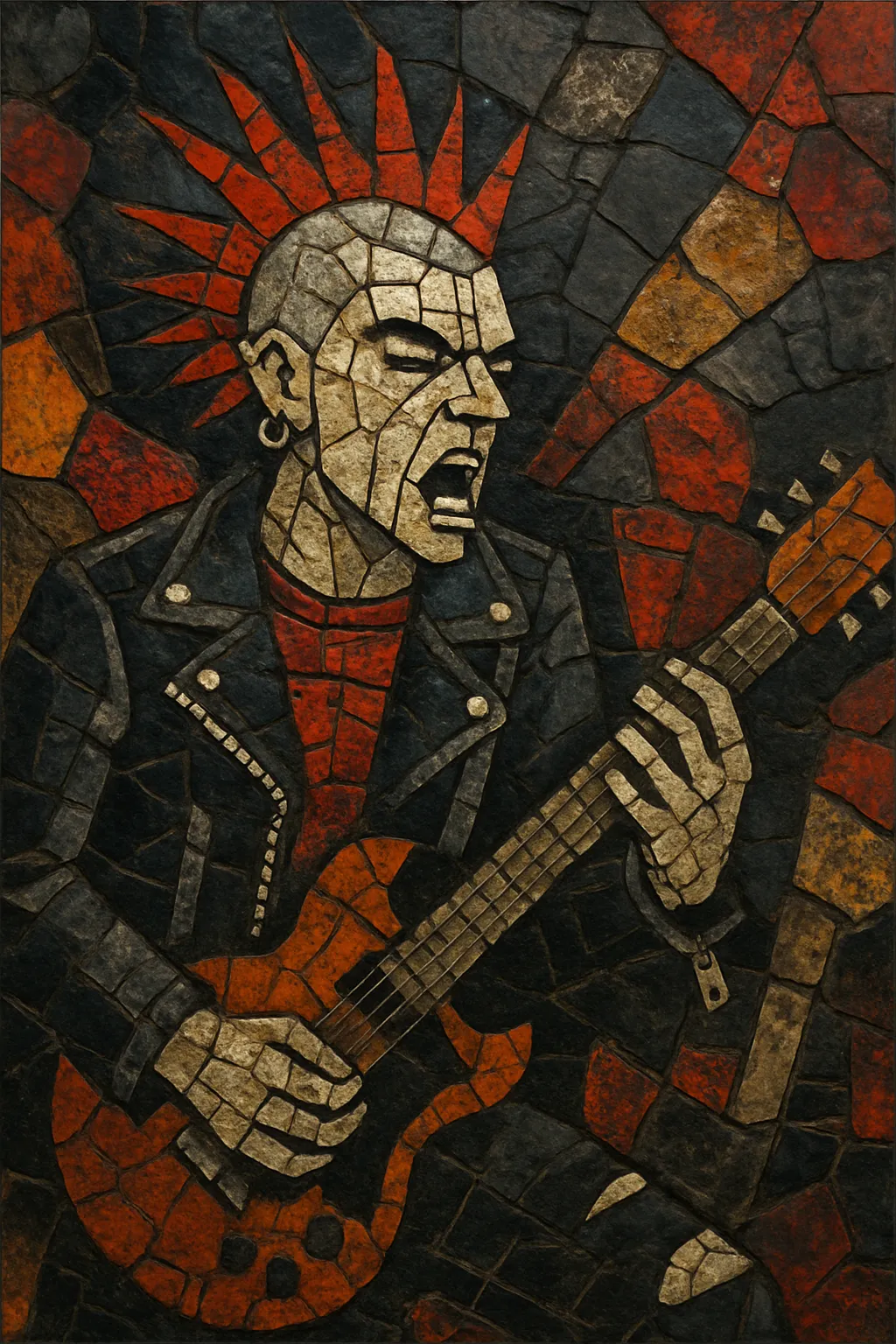Punk is a fast, abrasive, and minimalist form of rock music built around short songs, stripped-down instrumentation, and confrontational, anti-establishment lyrics.
It emphasizes DIY ethics, raw energy, and immediacy over virtuosity, often featuring distorted guitars, shouted or sneered vocals, and simple, catchy melodies.
Typical songs run 1–3 minutes, sit around 140–200 BPM, use power chords and basic progressions (often I–IV–V), and favor live, unpolished production.
Beyond sound, punk is a cultural movement encompassing zines, independent labels, political activism, and a fashion vocabulary of ripped clothes, leather, and safety pins.
Punk grew out of mid-1960s garage bands, British beat music, and raw R&B-driven rock & roll, later crystallizing through late-1960s/early-1970s proto-punk (The Stooges, MC5, New York Dolls). These artists emphasized primitive rhythms, feedback, and defiant lyrics that rejected the era’s growing rock excess.
A distinct scene coalesced in mid-1970s New York around CBGB (Ramones, Patti Smith Group, Television), championing short, high-velocity songs and DIY presentation. Parallel developments in the UK (Sex Pistols, The Clash, Buzzcocks, The Damned) turned punk into a social flashpoint amid economic crisis, youth unemployment, and media controversy. Independent labels (Stiff, Rough Trade) and fanzines amplified the movement’s grassroots infrastructure.
As the first wave waned, punk fractured into substyles. In the US, hardcore punk (Black Flag, Minor Threat, Dead Kennedys) accelerated tempos and intensity, while in the UK, Oi! and anarcho-punk (Crass) foregrounded working-class identity and radical politics. Simultaneously, post-punk and new wave carried punk’s experimental and DIY ethos into more varied textures and song forms.
Punk’s influence became global and cyclical. Grunge and alternative rock drew heavily on punk attitudes, while a 1990s pop-punk boom (e.g., Green Day, The Offspring) brought hooks and major-label reach. In the 2000s–2020s, punk persists across local scenes, online DIY networks, and countless hybrids—skate punk, melodic hardcore, riot grrrl, queercore—reasserting its core principles of simplicity, speed, and dissent.
Use a basic rock setup: electric guitar(s), electric bass, and a drum kit. Keep guitar tones crunchy and mid-forward with moderate-to-high distortion. Avoid excessive effects; a touch of overdrive, fuzz, or a simple delay is plenty.
Aim for 140–200 BPM with driving straight 8ths on guitar and bass. Drums emphasize a hard 2 and 4 backbeat, with relentless downstrokes on guitar to tighten the groove. Fills should be short and aggressive; avoid elaborate syncopation unless stylistically intended.
Write with 2–4 chords per section, often power chords on I–IV–V (and occasional bVII for bite). Structures are compact (intro–verse–chorus–verse–chorus–bridge–chorus) and songs typically run 1–3 minutes. Riffs should be memorable and easy to chant along with.
Deliver direct, confrontational lyrics about social issues, politics, alienation, or everyday grit. Vocals can be shouted, sneered, or sung melodically but should project attitude and clarity. Favor plain language, slogans, and call-and-response hooks.
Record quickly with minimal overdubs to preserve energy. Leave performances slightly rough; prioritize feel over perfection. Pan guitars simply, keep drums punchy and dry, and avoid heavy processing that blunts transients.


